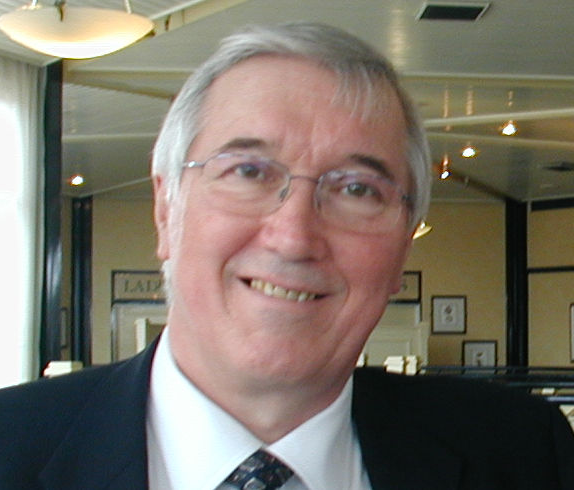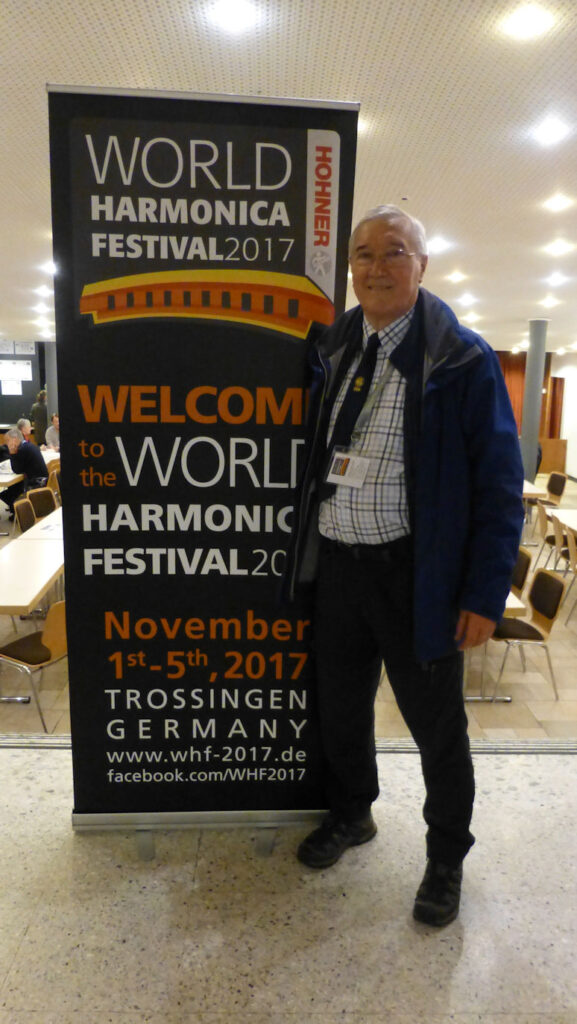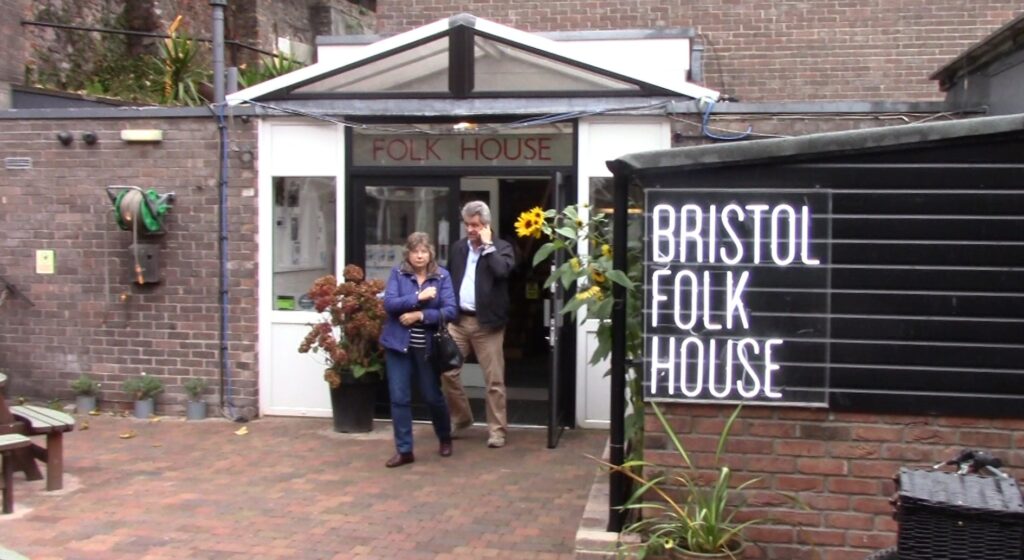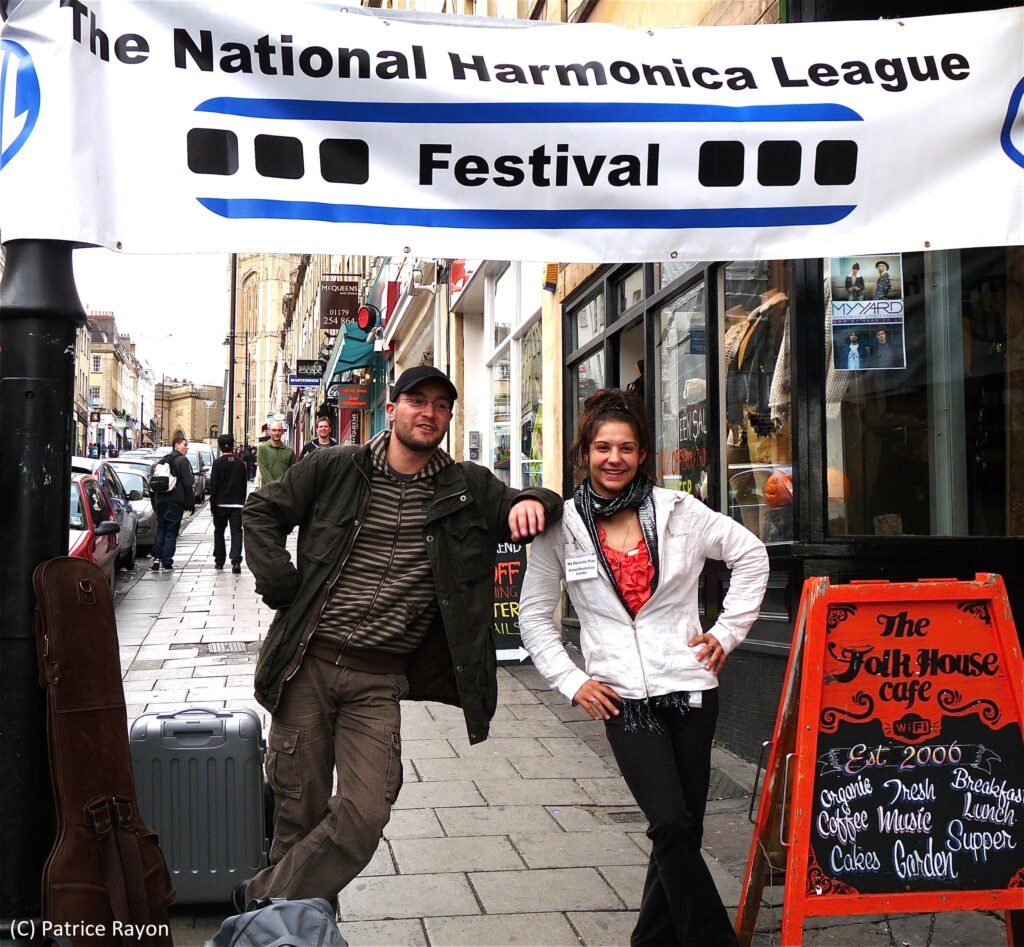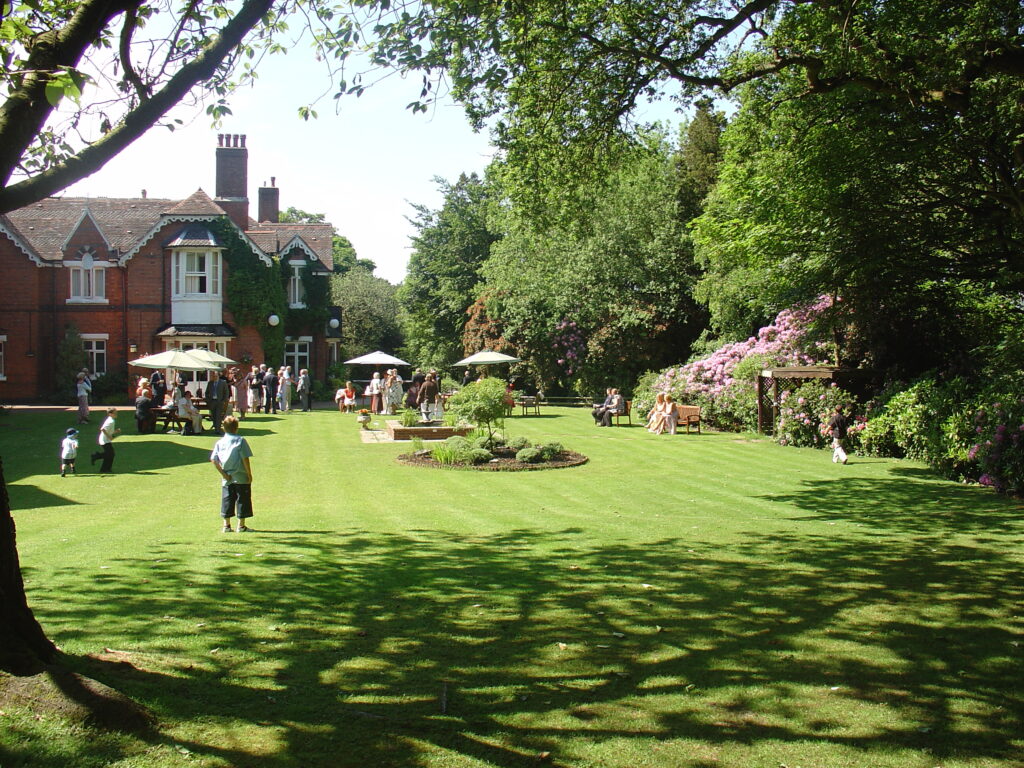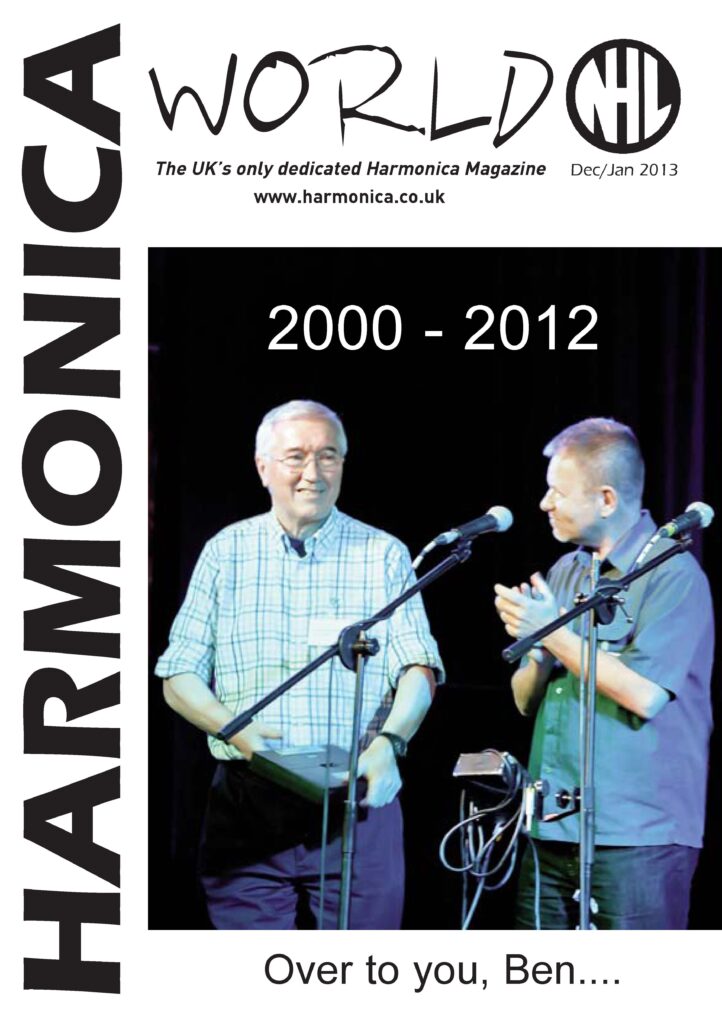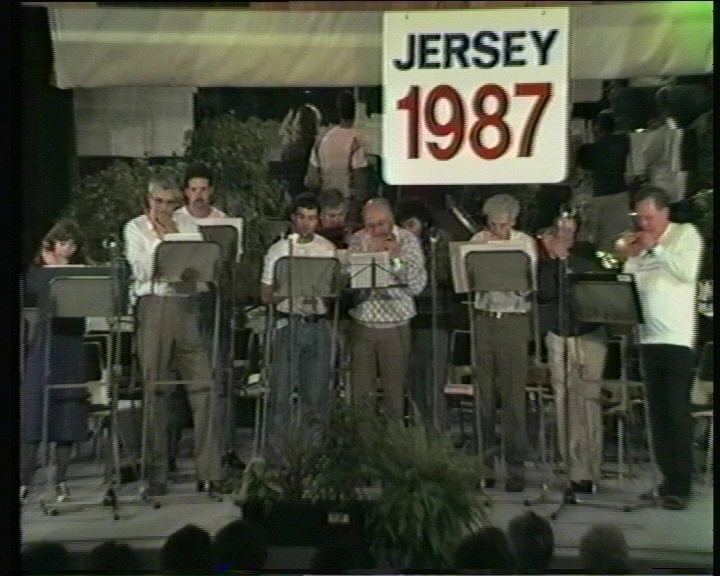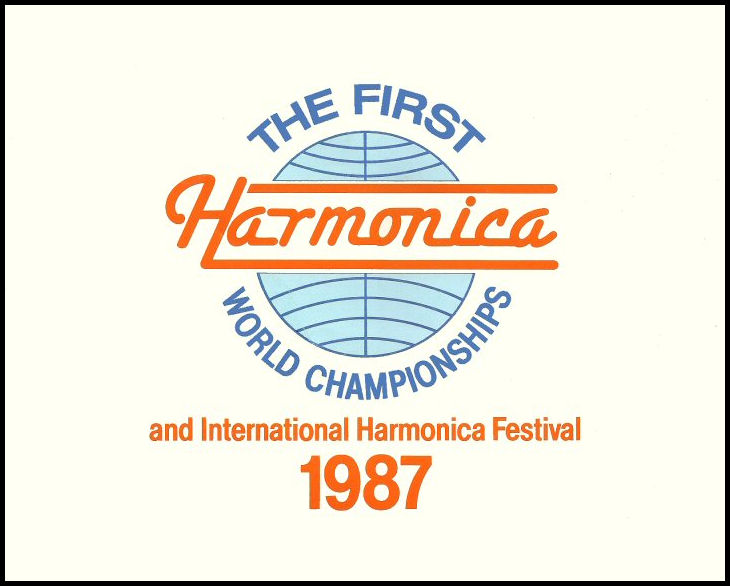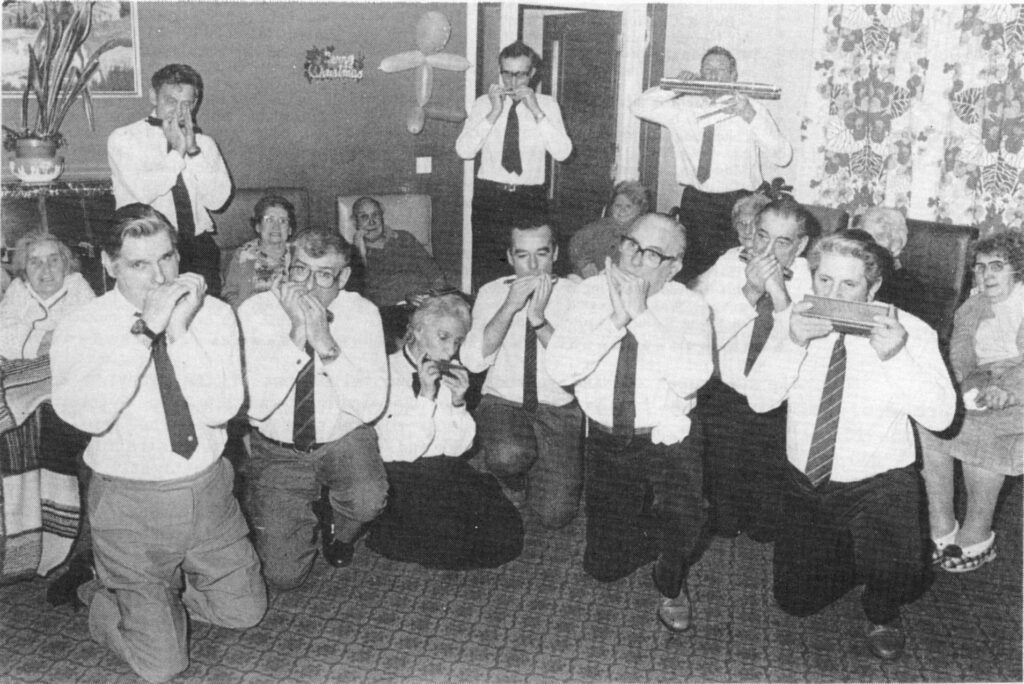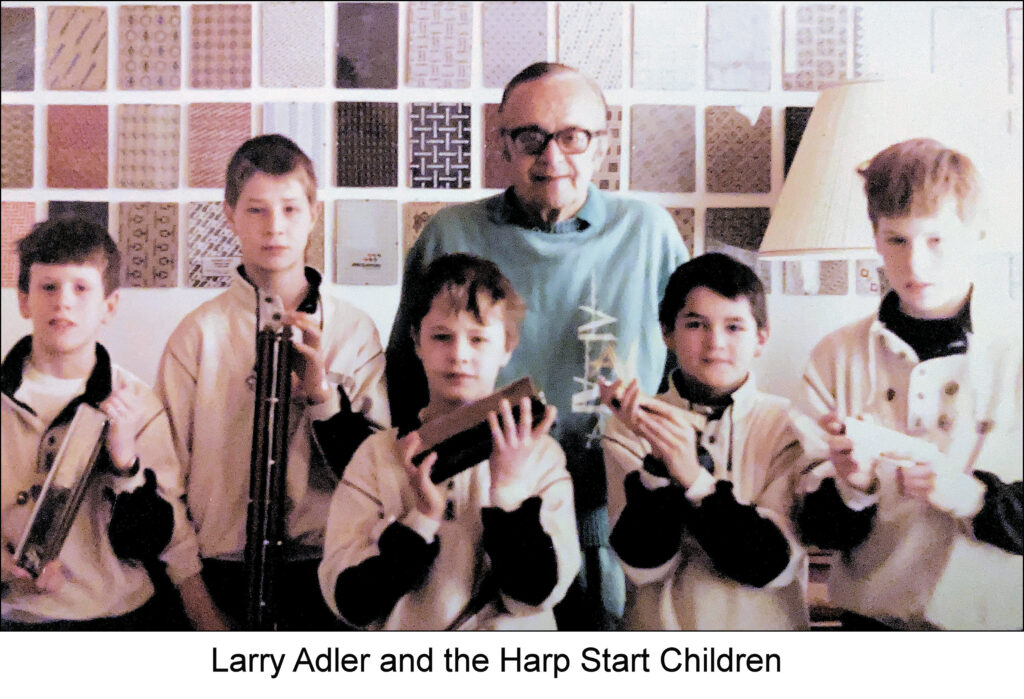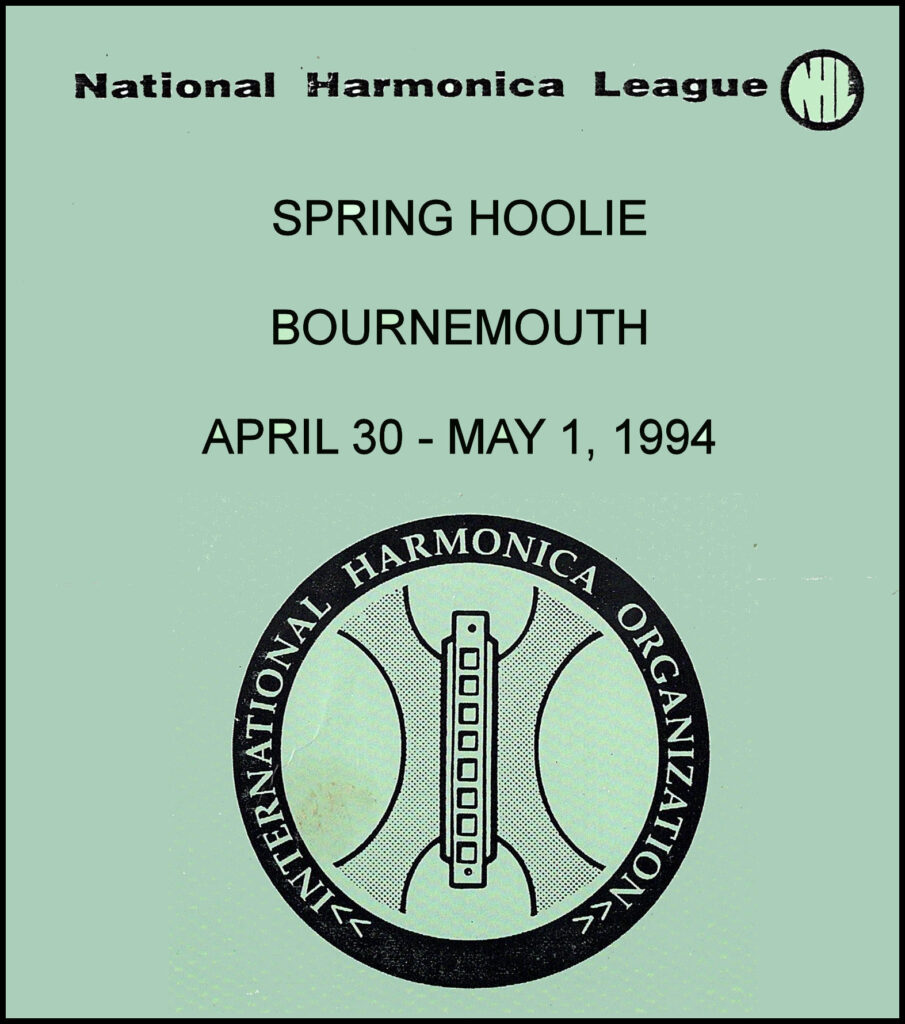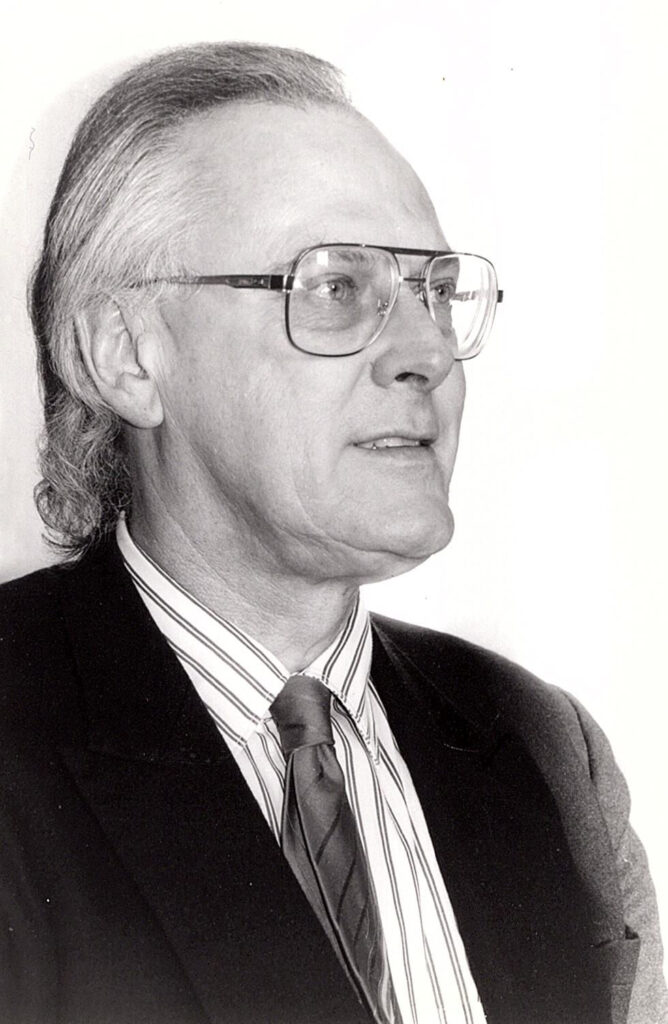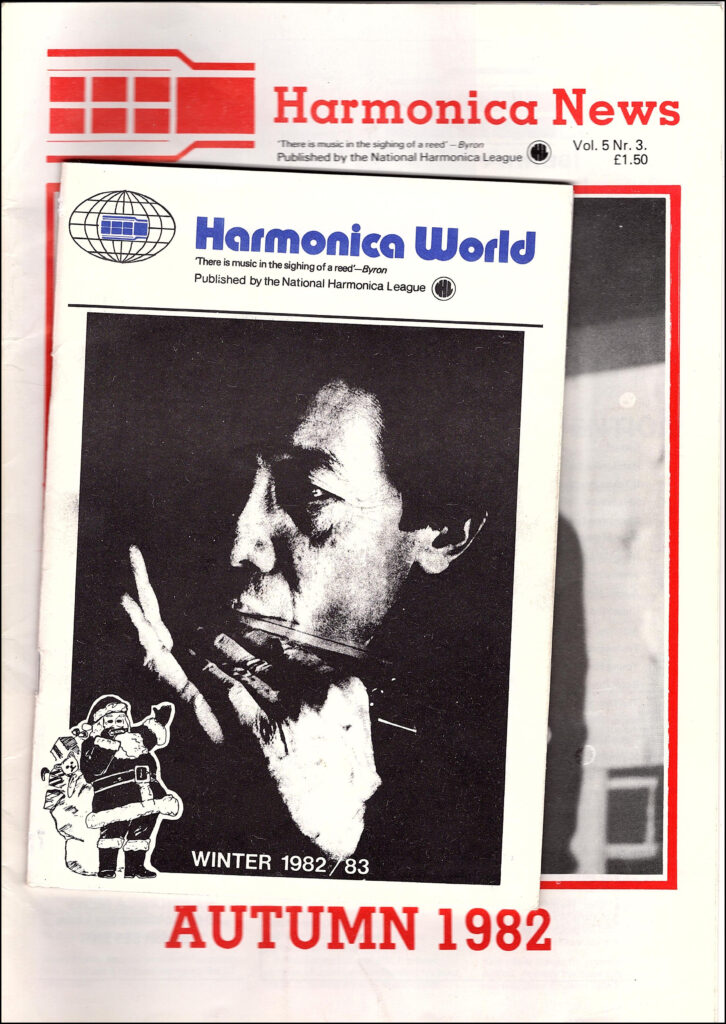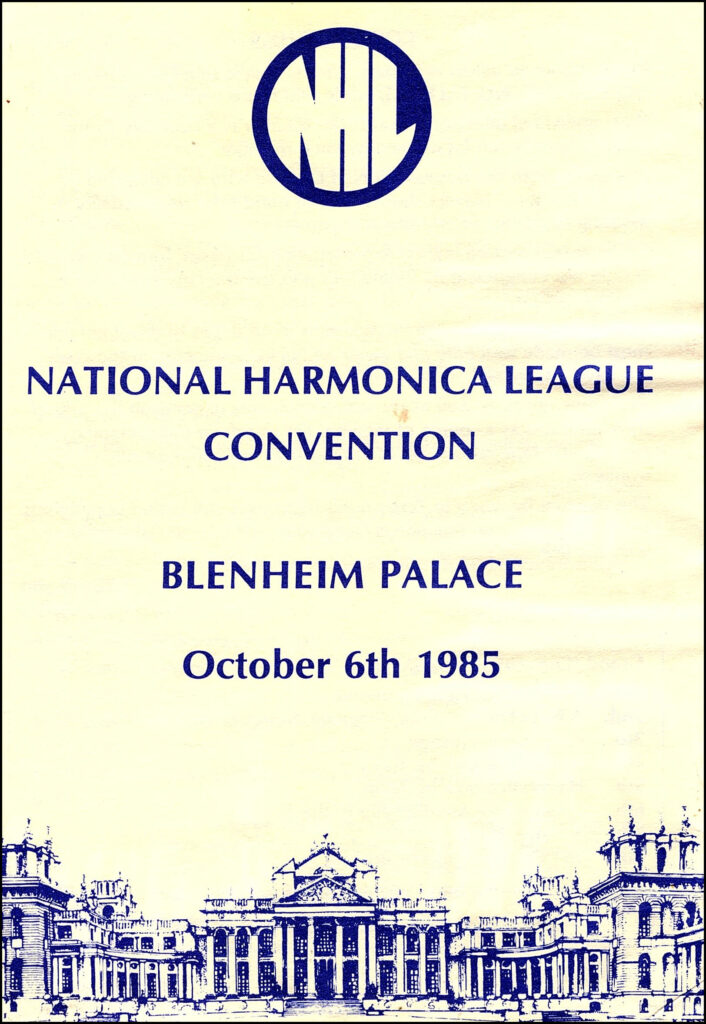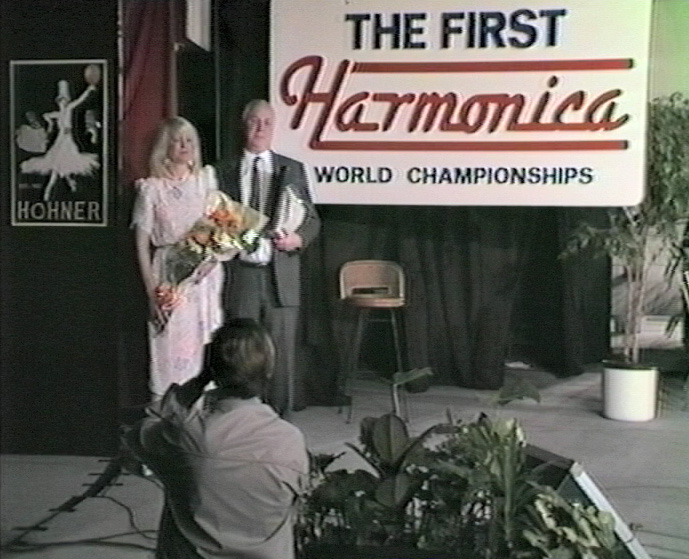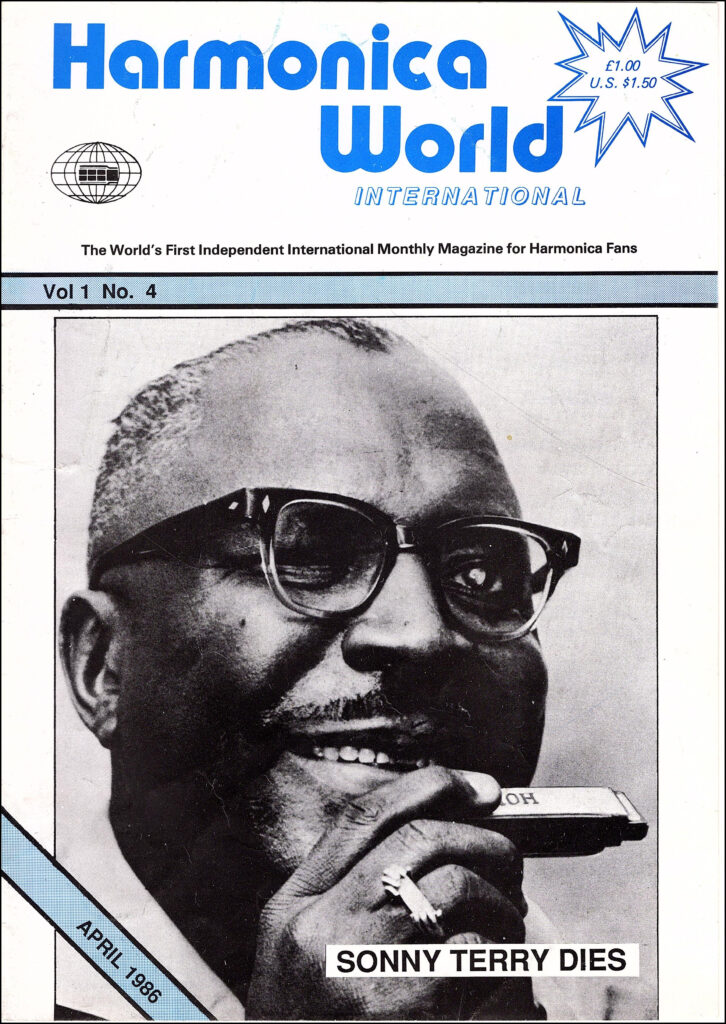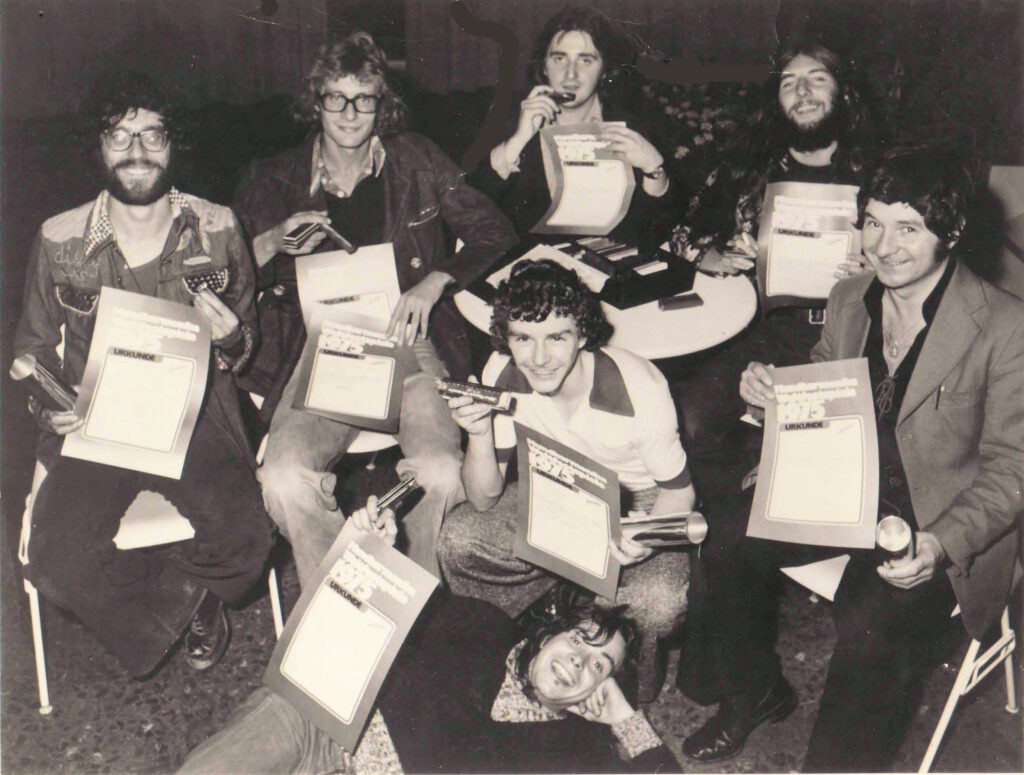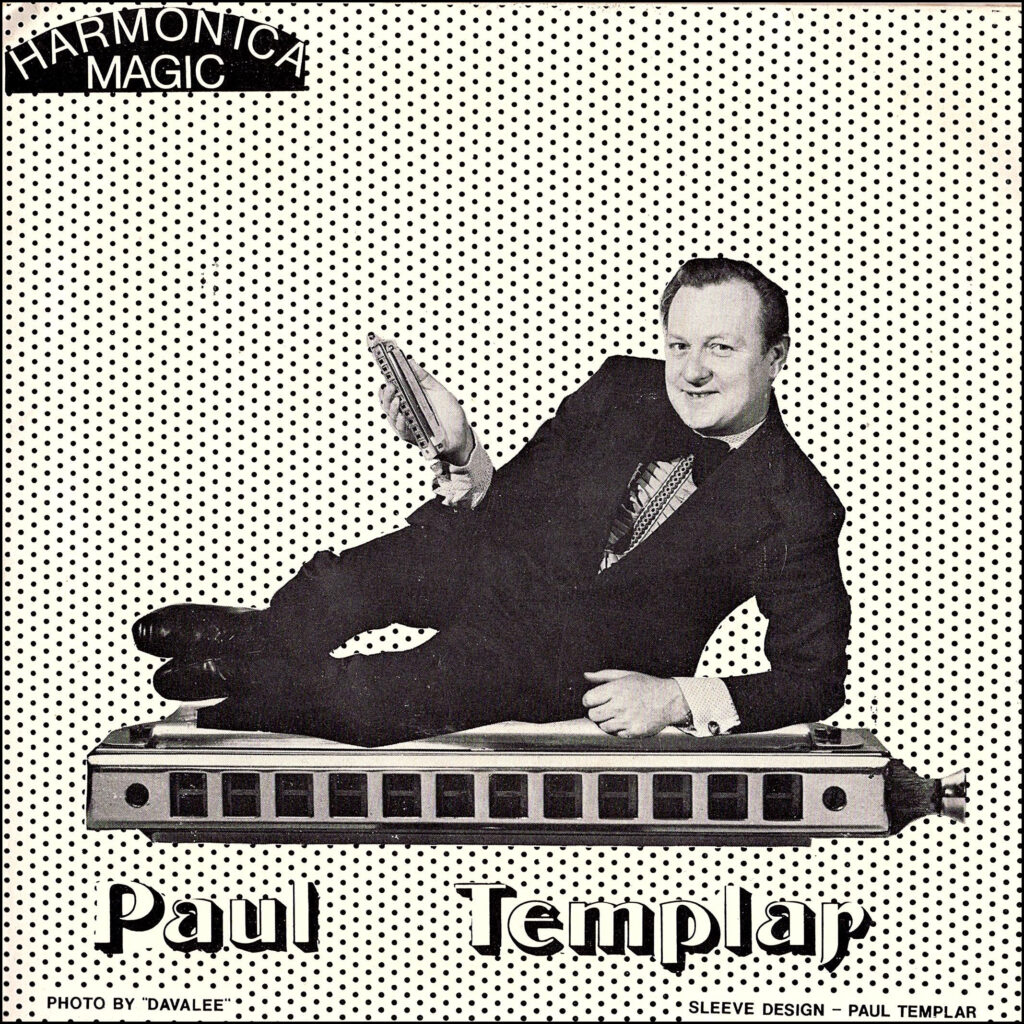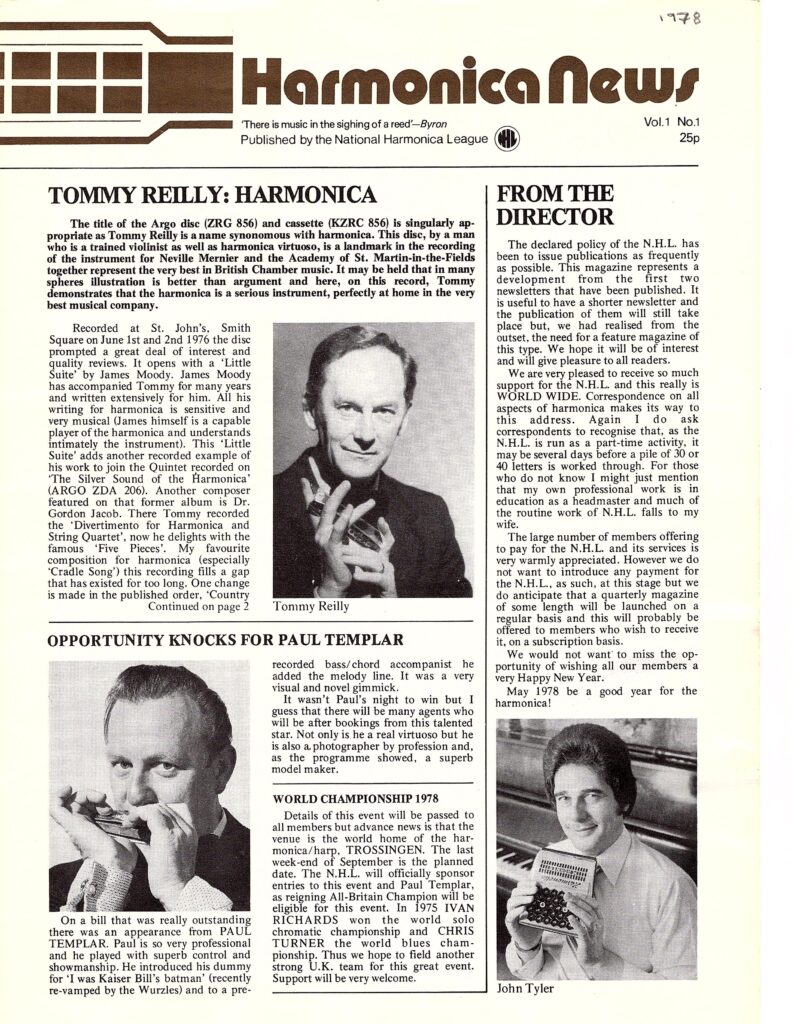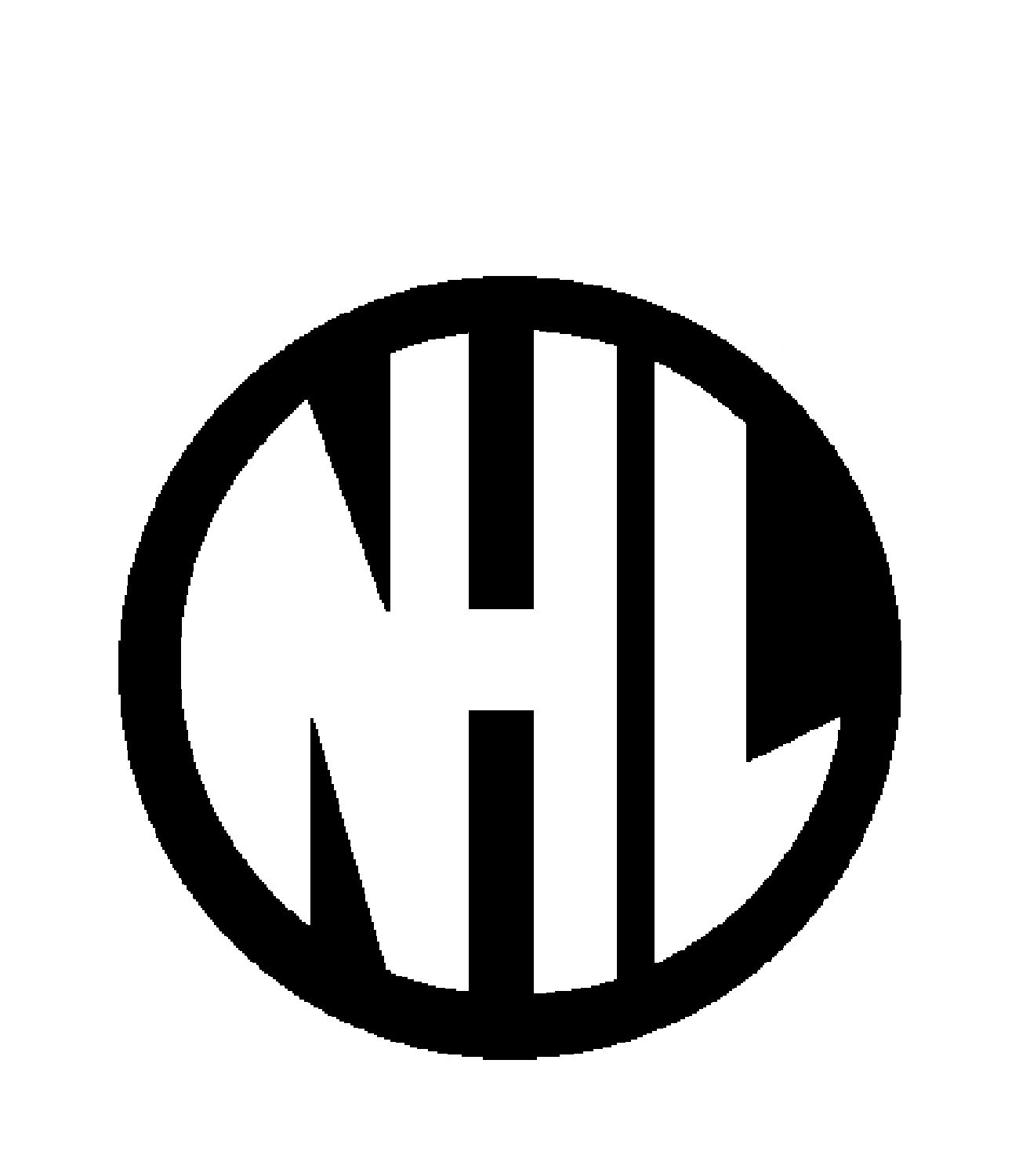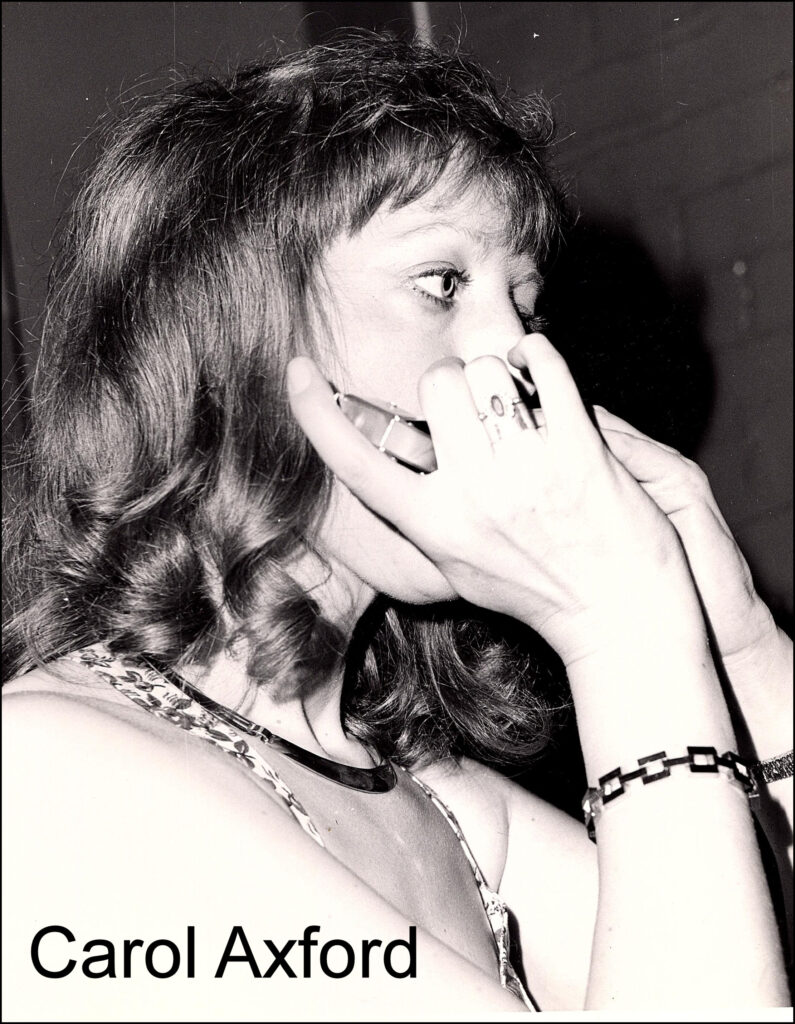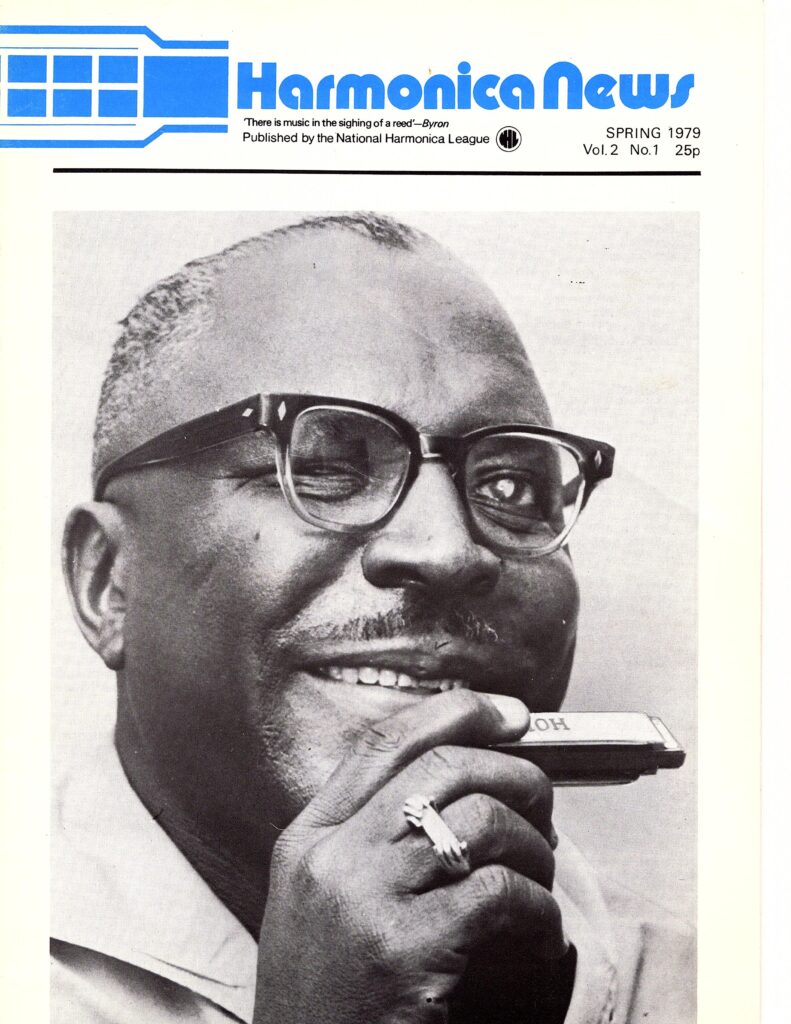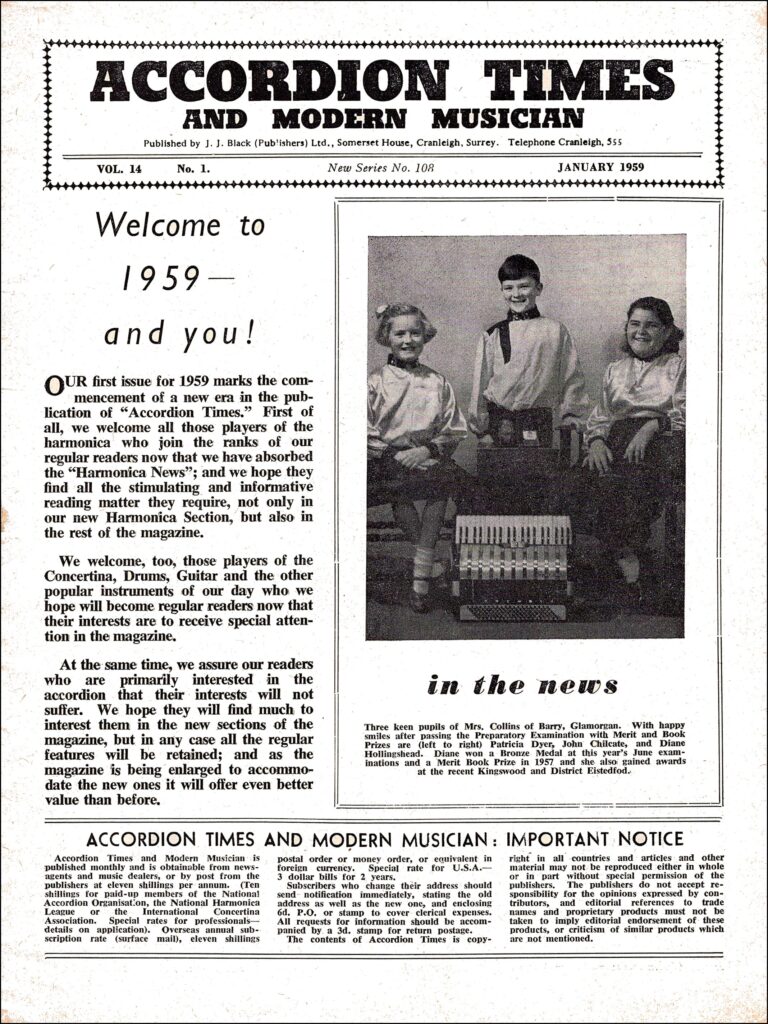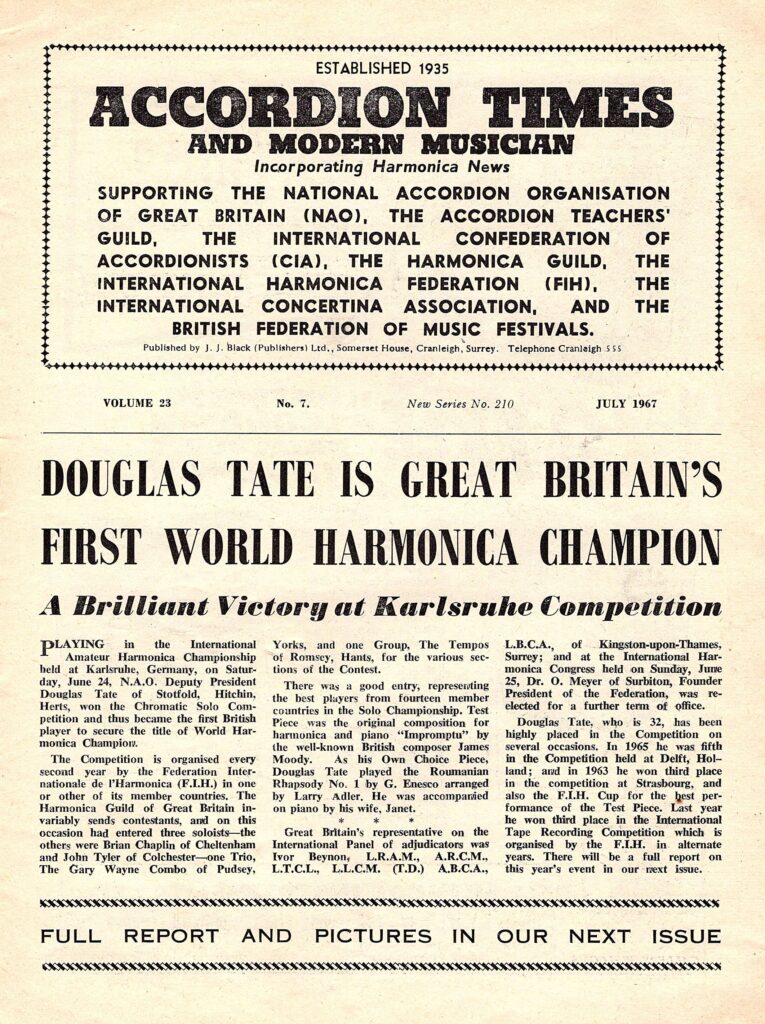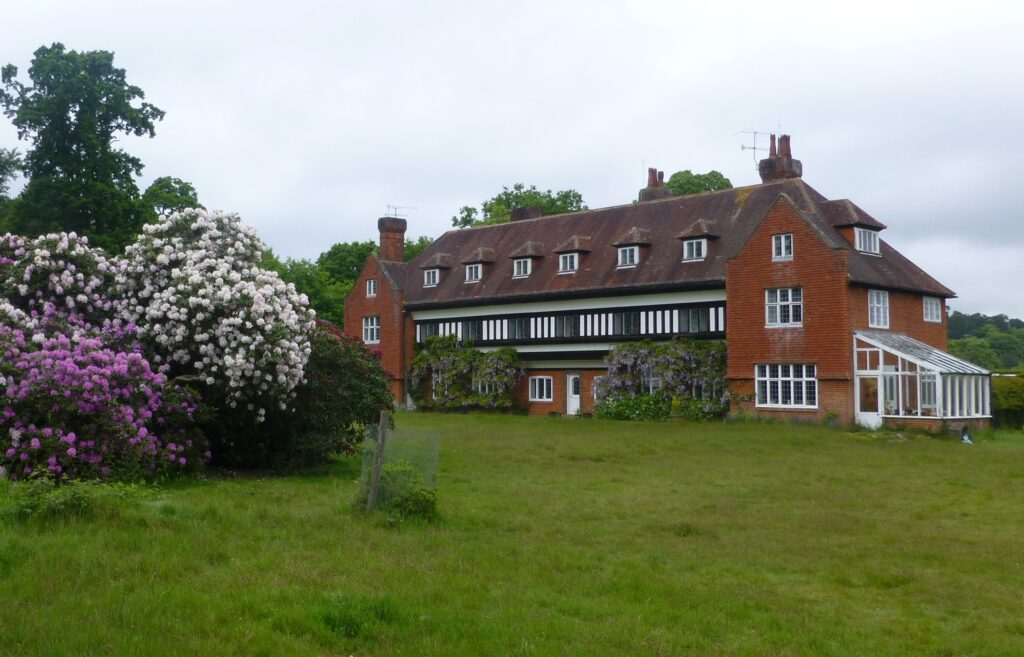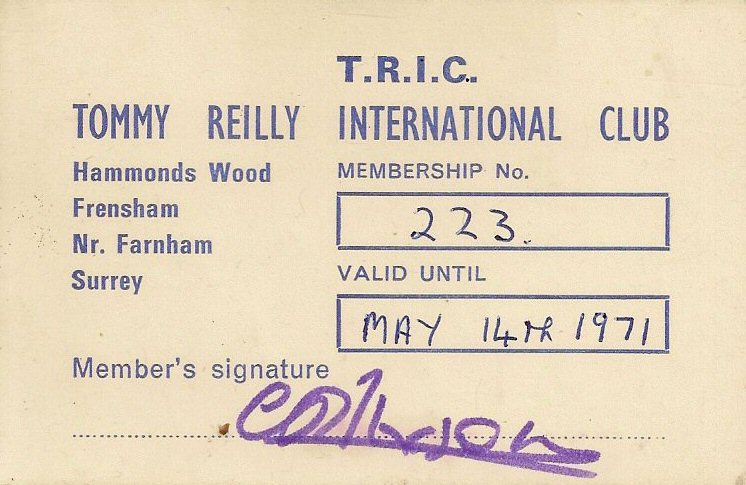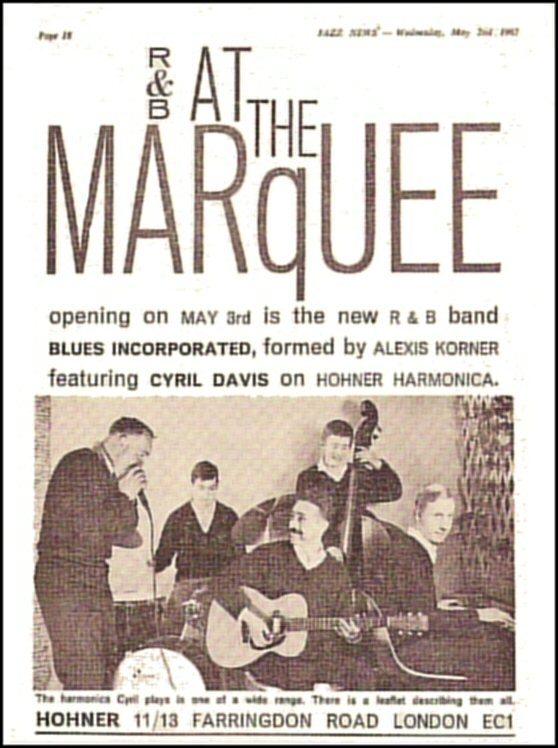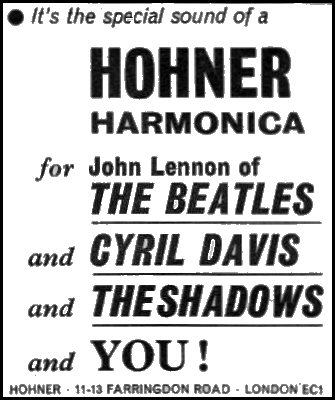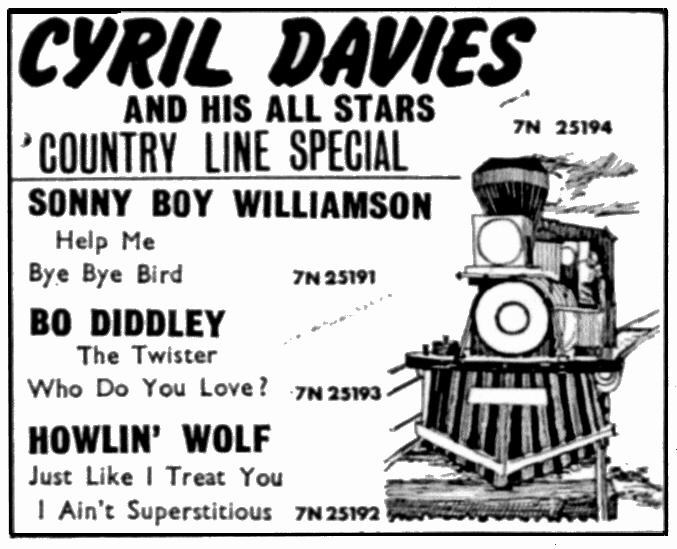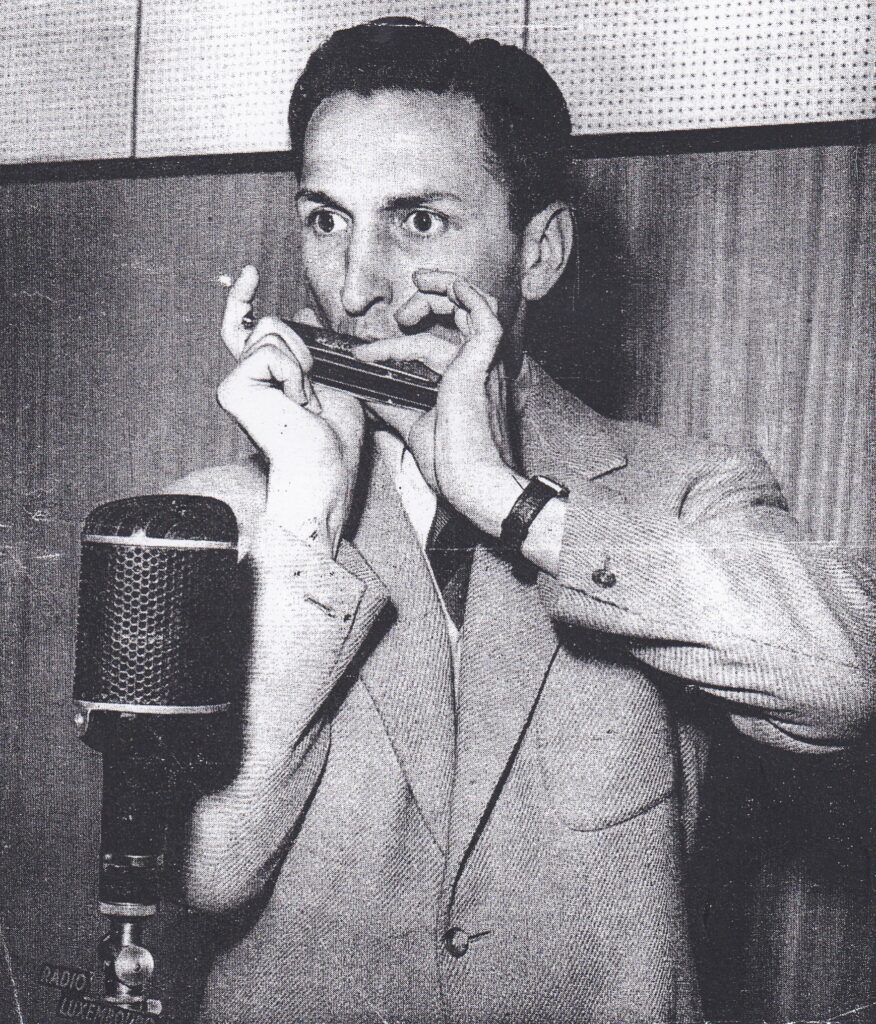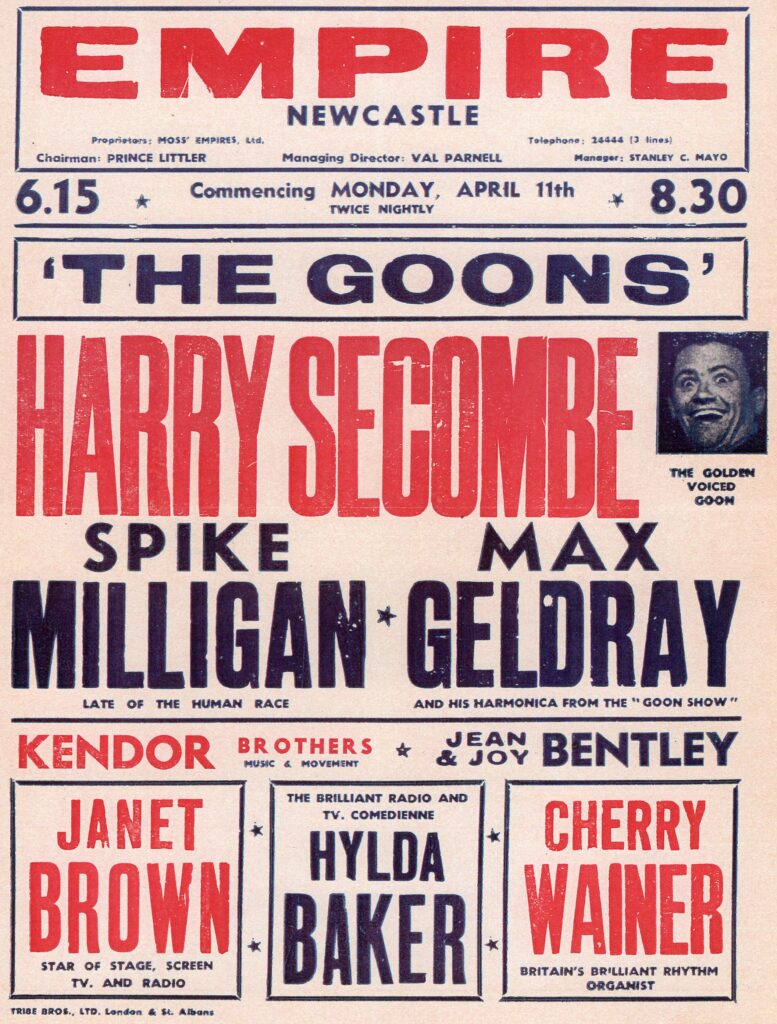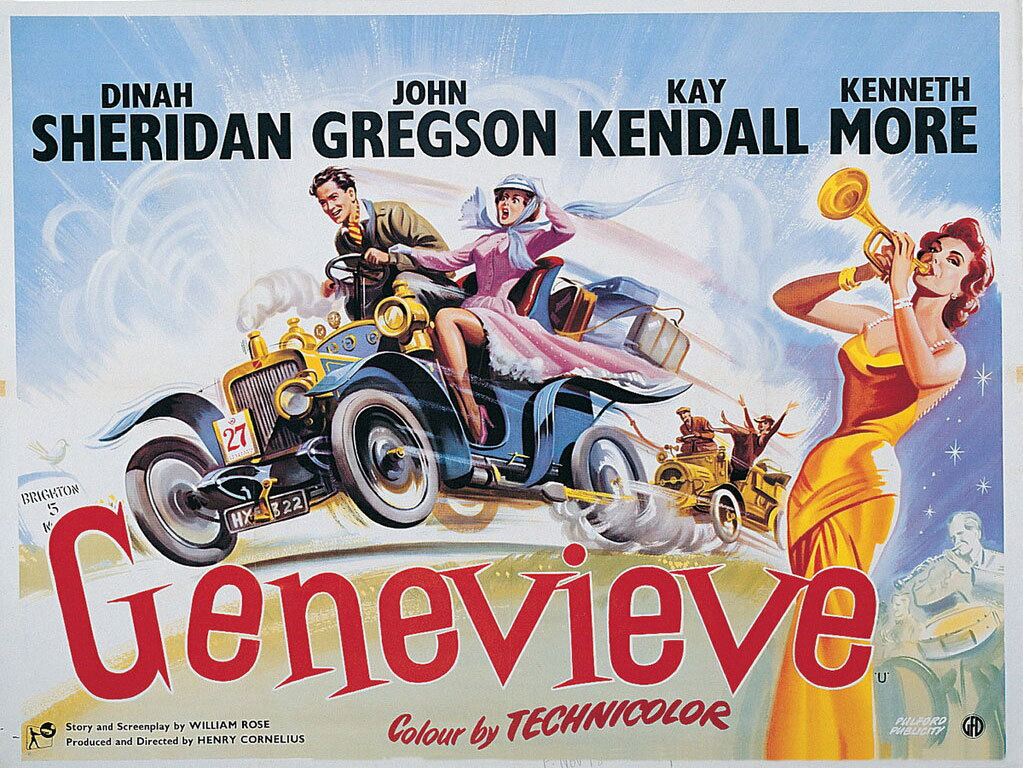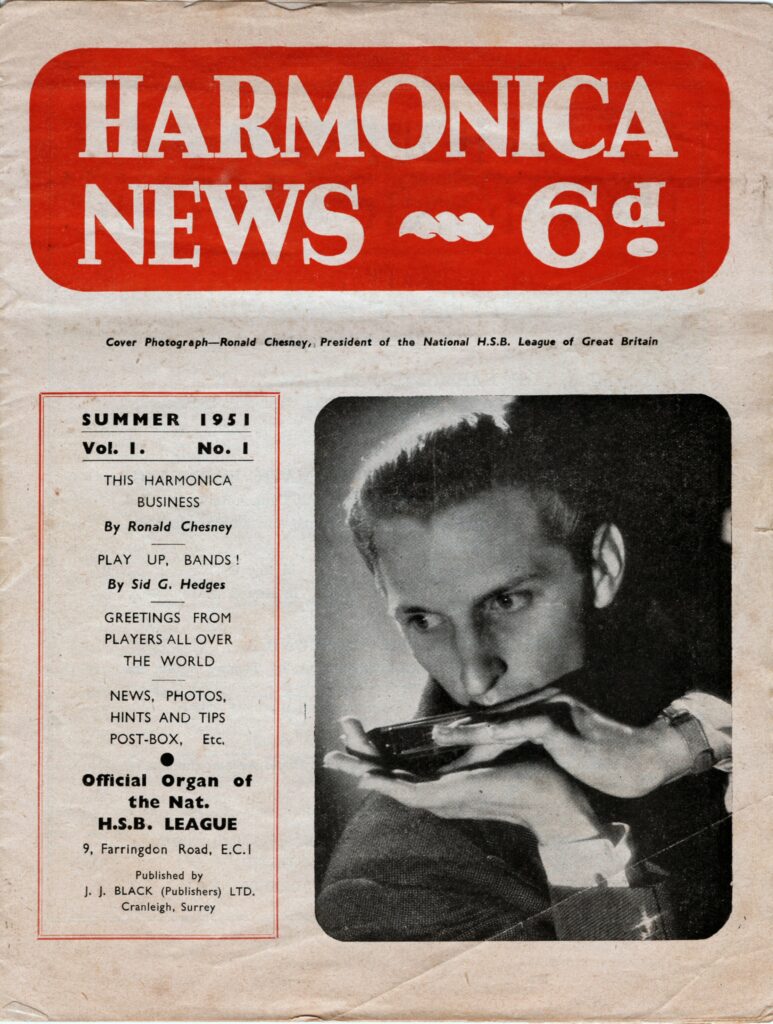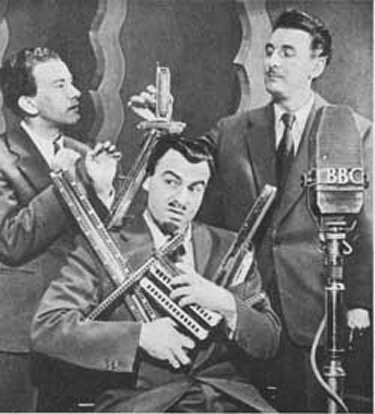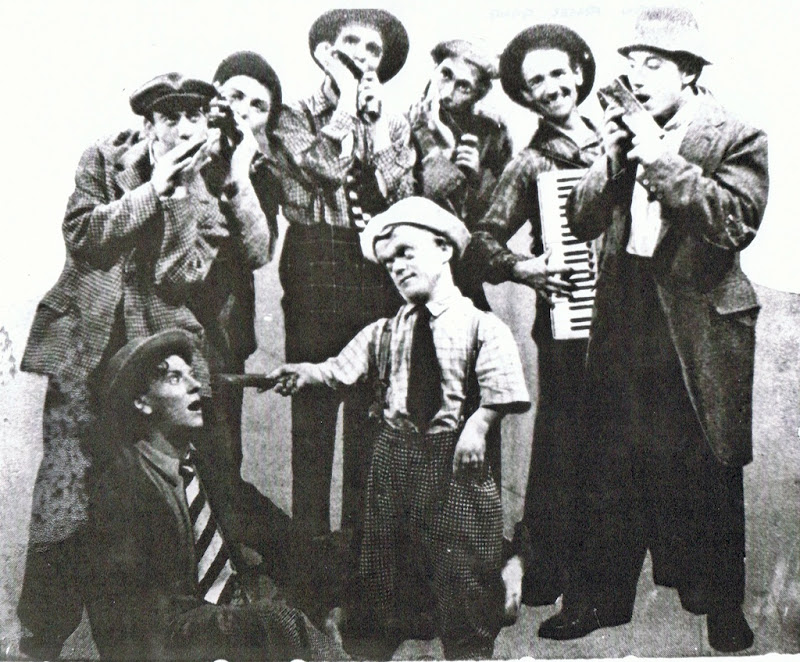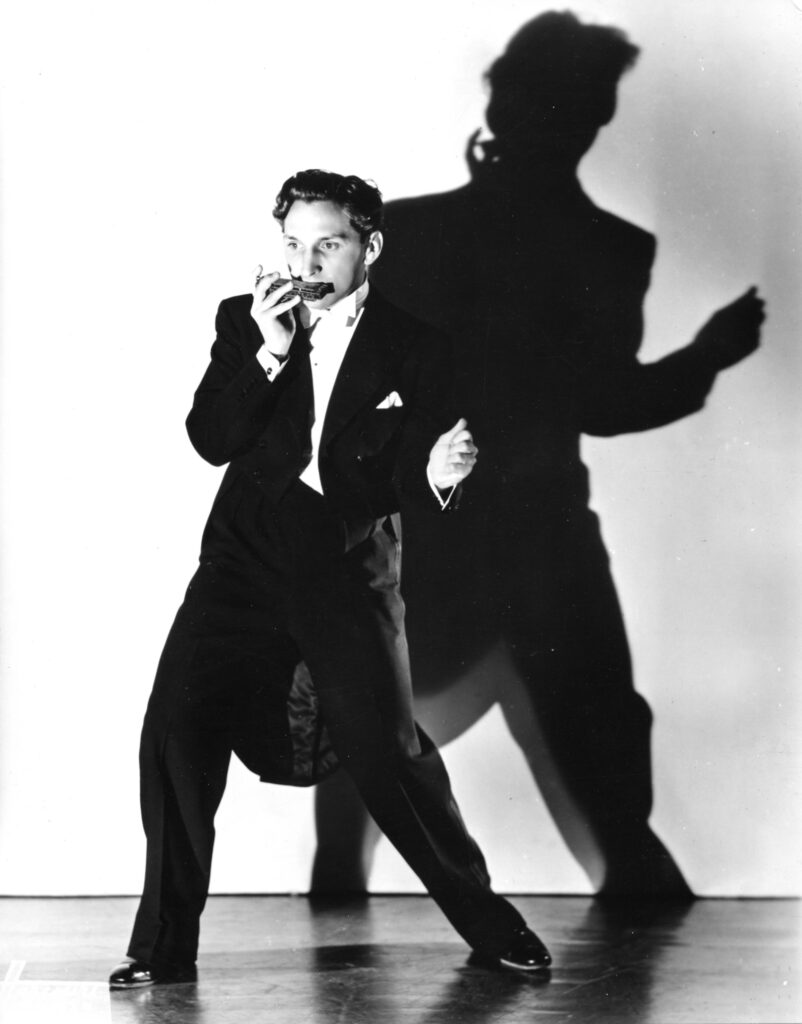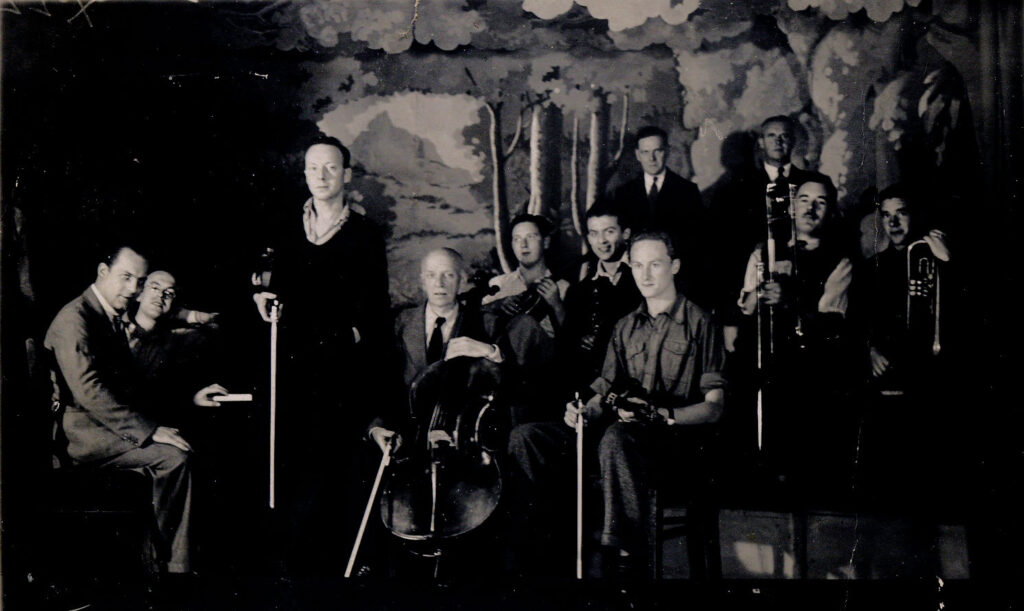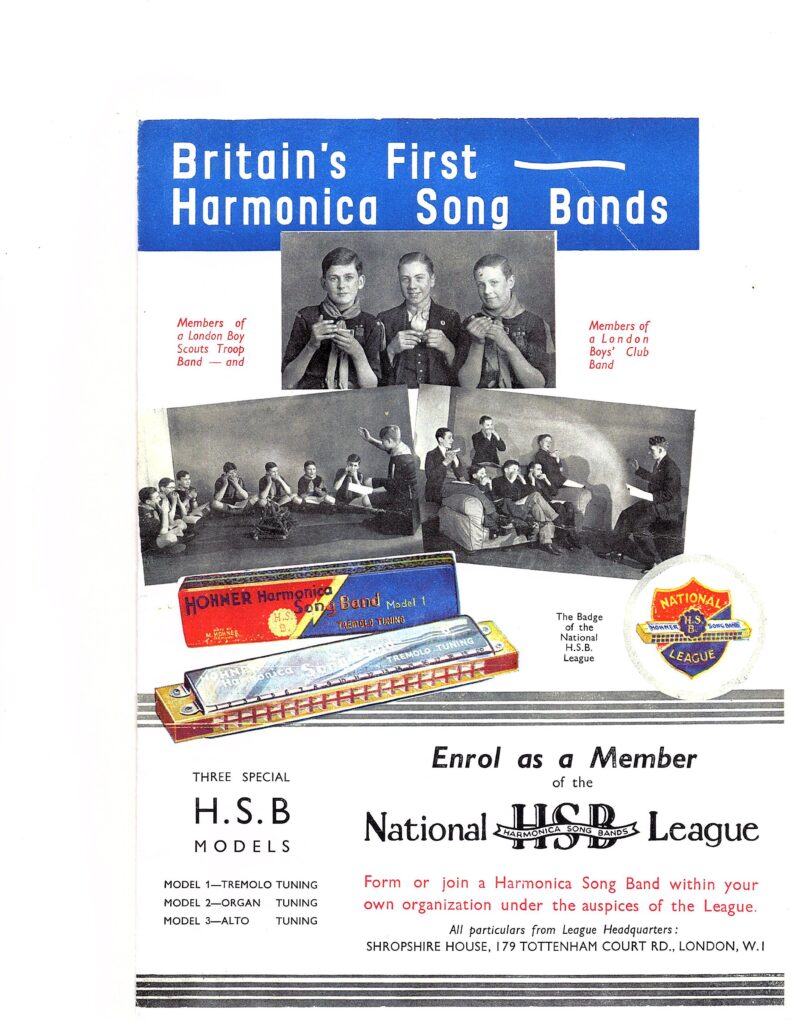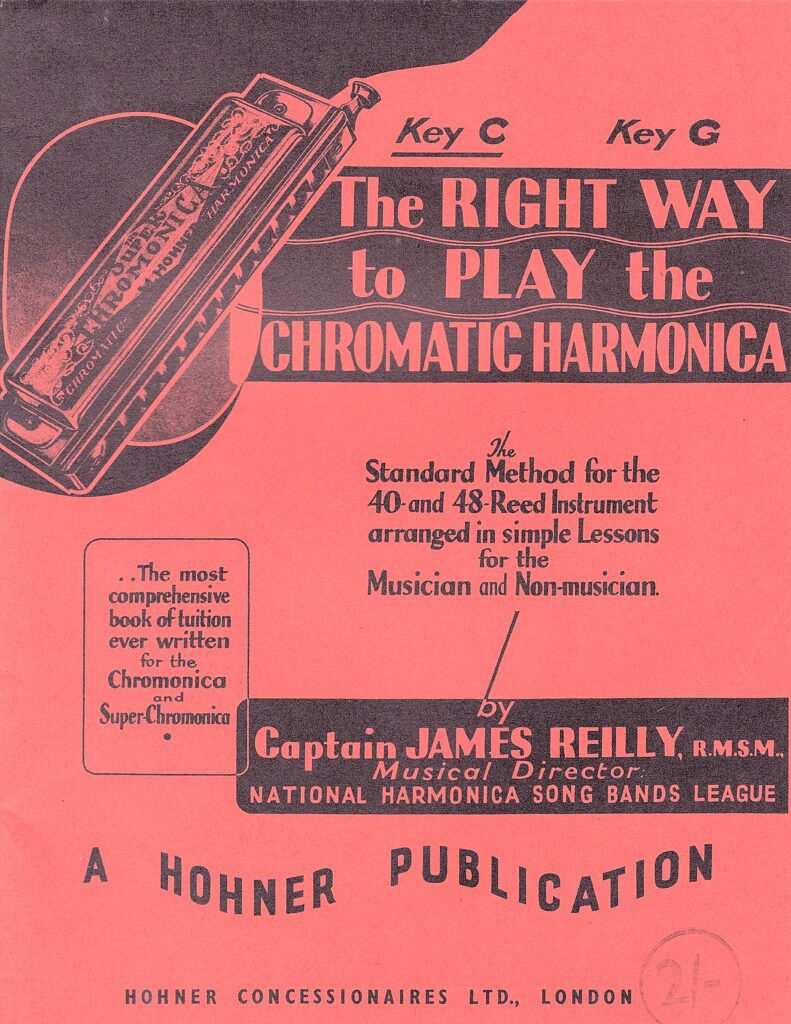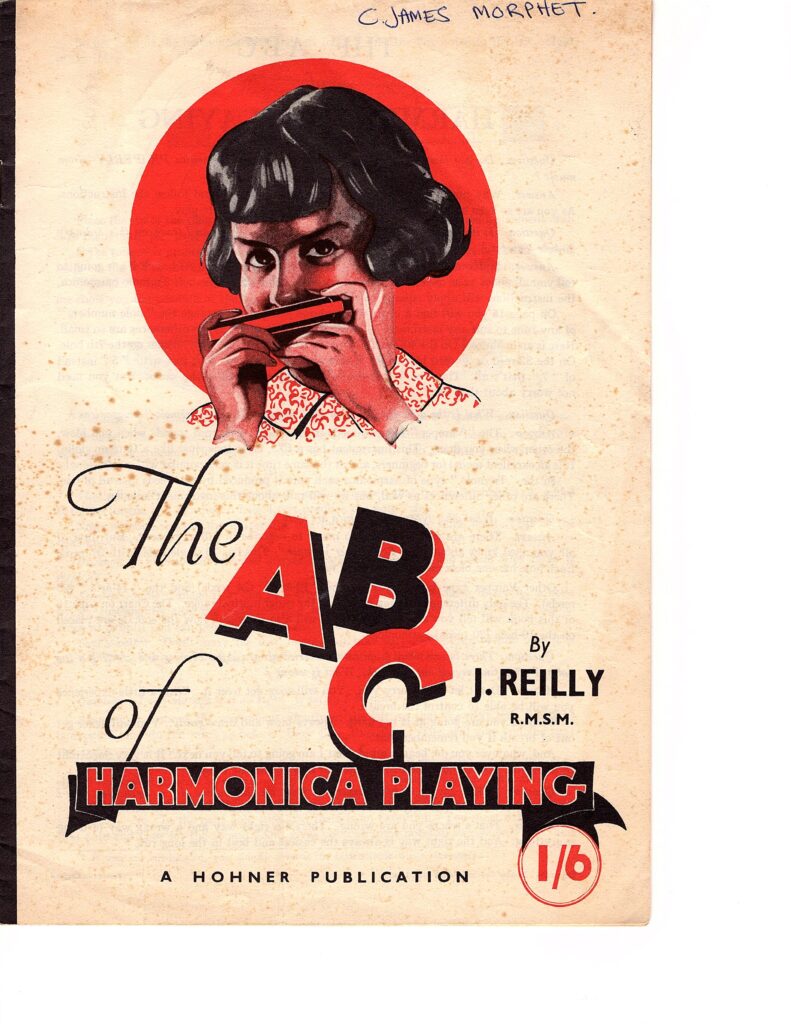Despite his poor heath, Larry did what he always did.
He played until he finally had to leave the stage.
I first got to know Larry when I joined the National Harmonica League (NHL, HarmonicaUK) committee in 1999. Larry was our President and needed help with his office. Gout had frozen his fingers making it very difficult for him to answer emails and write his articles and reviews. I visited Larry regularly and made his computer more accessible. I had set up the NHL website which had a page listing his many gigs around the country and in his favourite location – “The Pizza in the Park” in London.
Larry returned from a successful concert with Cham’ber Huang in Hong Kong in December 1999 and after a series of UK gigs he made a short tour in Australia in May 2000. On his return he wrote, “I’m playing at the Edinburgh Festival Aug 5 and 6, later in September at the Palace Theatre, London as part of the Soho Jazz Festival. Found a sensational piano accompanist whom I’m importing for these events.” This was the 18 year old Simon Tedeschi from Australia. He looked after Larry’s musical needs until his death, a year later.
Simon Tedeschi
Larry was set to tour Australia in 2000, and for whatever reason his pianist was indisposed. When he found out that a teenager was due to accompany him instead, he wasn’t happy in the slightest, and as anyone knows, Larry came from an era in which feelings were not held back. But when we met, the music flowed instantaneously. He called me son, and I called him pop. We exchanged Jewish jokes and talked about the world. He was a complex man, with many sides, some of them difficult, others charming and affable.
We went on, after that tour, to travel the world together. As his health failed, I had to do more and more to ‘fill in the gaps’ musically, but I never stopped learning from Larry, simply from being around him. I never quite worked out which of his stories were 100% true and which were confabulated, and I don’t think he quite knew either.
We performed at Pizza on the Park in Knightsbridge at least twenty times, and each time was a joy. We travelled on the Orient Express together, which I will never forget. We argued and laughed, jostled and teased. He was the first ‘legend’ I ever worked with.
Until only a week or so ago, I had no idea any footage of us playing together existed. I was his last pianist and according to him, the finest Gershwin exponent he’d ever heard. I still like to use that quote wherever I can!
Videos of Larry’s last performances
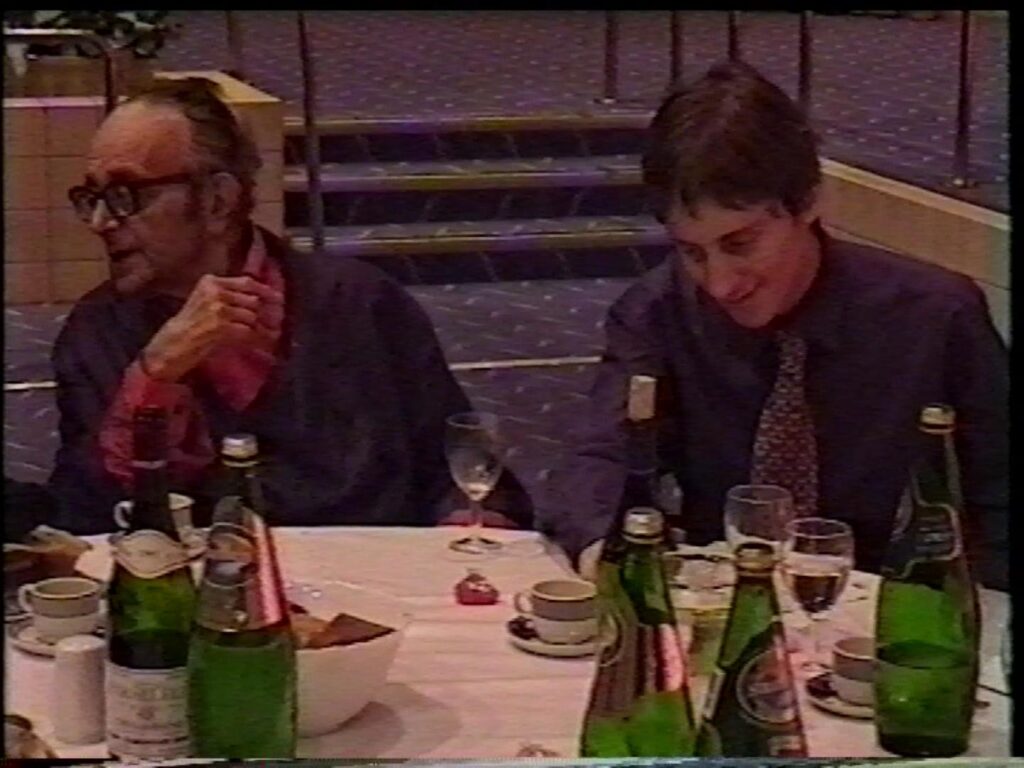
Larry Adler and Simon Tedeschi performed together on many occasions including at the IHO Millennium Festival Concert in Bournemouth, UK, 7-10 September, 2000. Larry was very ill but he did not want to disappoint his harmonica friends – he was President of the NHL. He arrived in a wheel chair and was assisted to and from the stage.
Here is the video from the concert.
After Larry’s death in August 2001, there was a Tribute Concert in The Arts Theatre in London, 30 October 2001. It was attended by lots of Larry’s friends and colleagues from the entertainment industry, including his brother Jerry, and Sir George Martin. Music was provided by Simon Tedeschi, Hot Club de Londres, Izzy Van Randwyck, and Harry Pitch.
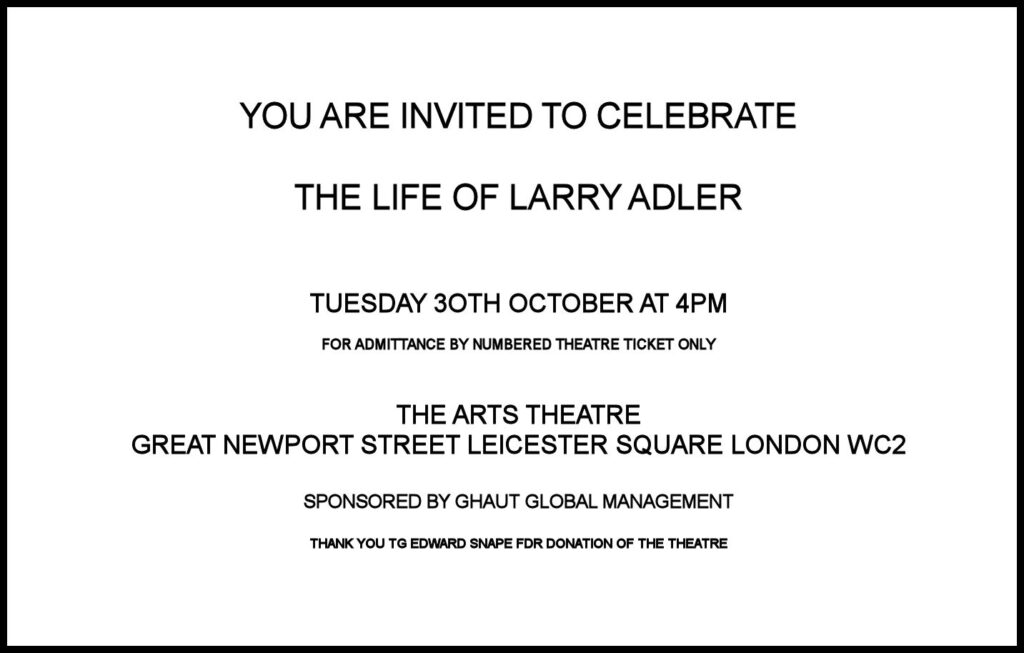
Here is a link to the video of the concert.
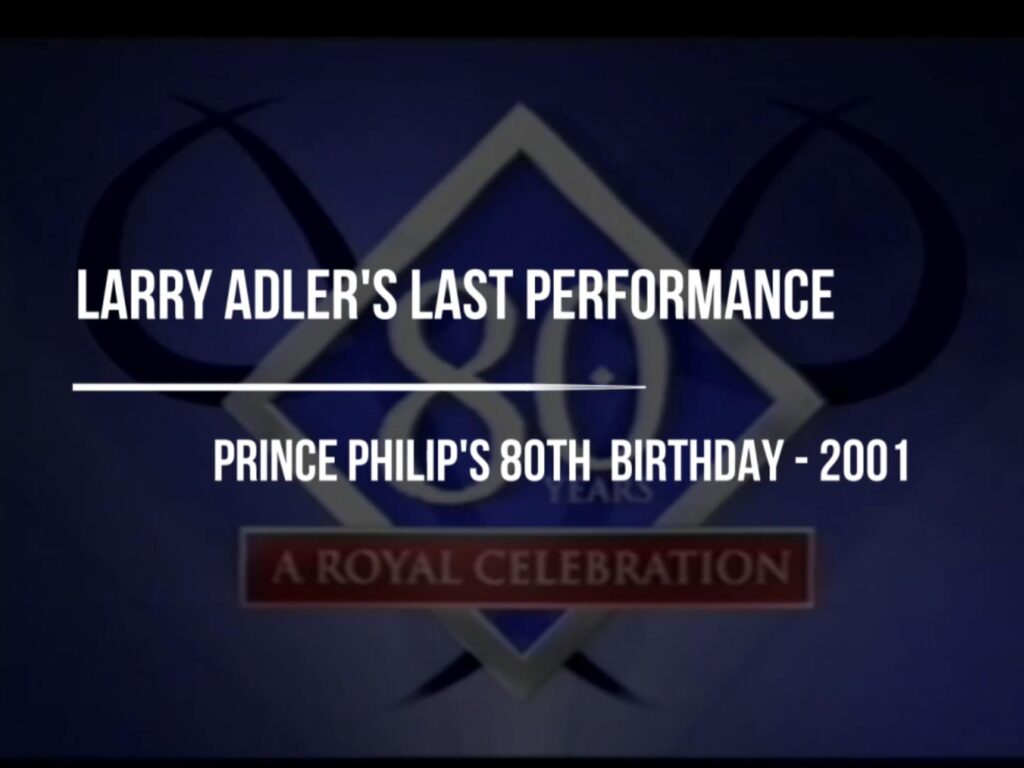
This was Larry’s last gig. He was in hospital in June 2001 and there was a big musical birthday party for his old friend, Prince Philip. His doctors would not let him take part so he slipped quietly out of his room, went to the concert in the Albert Hall and returned to the hospital.
Unfortunately for Larry the concert was televised by the BBC…
Here is a link to the video of Larry’s Great Escape.
Larry died in the hospital on 6 August, 2001.
Simon Tedeschi went on to have a successful career as a musician and writer – https://simontedeschi.com
Other Larry Adler pages on my blog
